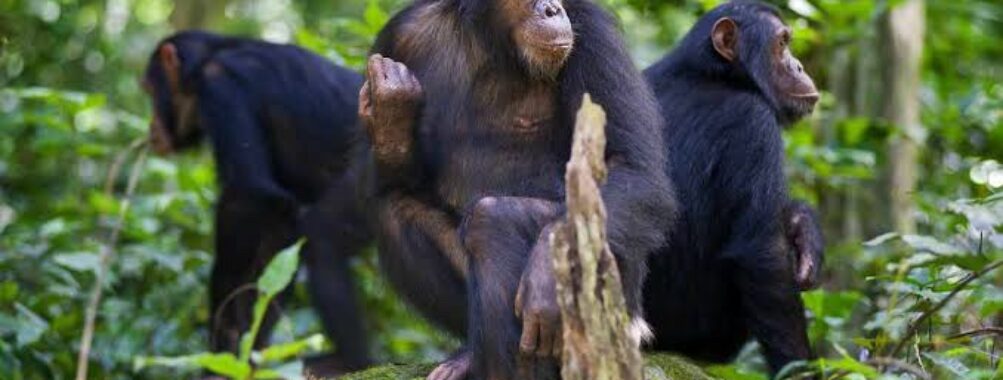
Gombe National Park
Table of Contents
Description
Gombe National Park has this way of making you feel like you’ve stepped into someone else’s lifelong passion project—probably because, in a way, you have. This is the place where Jane Goodall first made the world fall in love with chimpanzees, and you can still feel that energy in the air. It’s small compared to many other African parks, but that’s part of its charm—you’re not here for endless plains or giant herds; you’re here for intimate encounters and the quiet thrill of being in a place where groundbreaking science happened.
Now, it’s not perfect. The terrain can be rugged, and the facilities, while decent, aren’t luxury-level. But that’s not why people come. They come for the rustle of leaves that might just be a chimp swinging overhead, for the way the light filters through the trees in the late afternoon, and for the chance to see wild primates behaving exactly as they have for thousands of years. I still remember my first hike here; I was sweaty, covered in dust, and honestly a little cranky from the heat—then, out of nowhere, a young chimp dropped from a branch right in front of us. Any discomfort just vanished in an instant.
There’s a certain rawness to Gombe that makes it appealing. You’ll find picnic tables and a few playground features if you’re traveling with kids, and yes, there’s even a volleyball court if you somehow have the energy after trekking. But the real magic is in the forest trails, the quiet moments by the lake, and the sense that you’re walking through living history. It’s not a place for rushing; it’s for slowing down, listening, and letting the forest tell its stories.
Key Features
- World-renowned chimpanzee tracking opportunities
- Guided hikes through lush forest trails
- Scenic views of Lake Tanganyika
- Kid-friendly hikes and playground areas
- Picnic spots with barbecue grills
- Public restrooms and basic visitor amenities
- Opportunities for birdwatching and spotting other primates
- Wheelchair accessible parking lot
Best Time to Visit
If you’re here for the chimps—and let’s be honest, most people are—then the dry season from June to October is your best bet. The trails are easier to navigate, and the chimps tend to stay closer to the main paths. That said, I’ve visited in the rainy season, and while the mud was a challenge (goodbye, clean shoes), the forest felt even more alive. The air was thick with the smell of wet earth, and the greenery was almost overwhelming in its richness. Just be prepared for sudden downpours and pack accordingly.
One thing I’ve learned: mornings are golden here. Not just for the cooler air but because wildlife activity tends to be higher. Plus, there’s something about sipping coffee while watching the mist lift off Lake Tanganyika that just sets the tone for the day.
How to Get There
Reaching Gombe isn’t as simple as hopping in a car and driving straight in. Most travelers start from Kigoma, a lakeside town that’s the gateway to the park. From there, you’ll take a boat ride along the shores of Lake Tanganyika—sometimes calm and glassy, sometimes choppy enough to make you hold onto your hat. It’s a journey that already feels like part of the adventure. The ride can take anywhere from 1.5 to 2 hours, depending on the boat and weather conditions.
For those who like to plan every detail, you can arrange transport through local tour operators or some lodges in Kigoma. Just remember: this is Tanzania, and schedules have a way of bending to the realities of the day. A little flexibility goes a long way.
Tips for Visiting
First off, bring sturdy shoes. The trails can be steep, slippery, and occasionally covered in loose rocks. I once saw a guy try to hike in flip-flops—he didn’t make it far before turning back. Also, pack plenty of water, even if you think you won’t need it. The humidity can sneak up on you.
If you’re into photography, a zoom lens is worth its weight in gold here. The chimps aren’t always right in front of you, and you’ll want to capture those candid moments without disturbing them. And speaking of disturbance—keep your distance. Not just because it’s the rule, but because these are wild animals with their own space and rhythms.
Lastly, give yourself time. A single day can feel rushed, especially if you’re traveling with kids who might want to explore the playground or take a slower pace on the hikes. Spending at least two days allows you to really settle into the rhythm of the park, maybe catch a second chimpanzee trek, and even enjoy a quiet afternoon by the lake without feeling like you’re missing out.
Location
Places to Stay Near Gombe National Park
Find and Book a Tour
Explore More Travel Guides
No reviews found! Be the first to review!